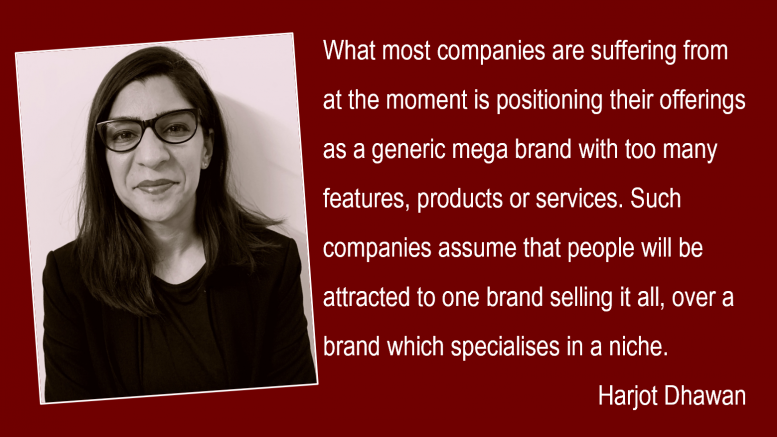It’s almost 2023 and we are in an exciting phase of the corporate landscape, with newer brands emerging in the country, many professionals planning to start their own entrepreneurial journey post the great resignation, while some have already jumped the wagon. Wherever you are in this journey, or even if you are a marketer looking to create winning brands, you surely know how competitive the market is currently.
So besides claiming the best price, product, or service, how does one create a ripple in the market and attract customers?
When entering a competitive market, playing by the consumer’s unsaid criteria for selecting one brand over another can give you an edge.
- What is the REAL problem you are solving?
Dig deeper, beyond the obvious.
Steve Jobs famously stated, “Consumers don’t know what they want”, and that is now beginning to make sense to marketers as we push beyond the boundaries of assumptions and understand the underlying motivations of customers better. When looking at a problem, think about the underlying fear or concern from the potential customer’s perspective. As an example, consider the last smartphone you purchased. You probably would have looked at options within your budget and picked one to solve one significant need, let’s say you wanted a better camera. But what you really wanted was to be able to up your Instagram game, be seen in a different light in your social groups, support your side hustle/ hobby with better pictures, or all of the above. So effective communication about the ‘real’ pain points would entail directly addressing them instead of calling out a 48 Megapixel camera which doesn’t ring a bell in our mind unless it’s compared to another phone’s specifications – an added effort for the customer. Apple uses this technique beautifully by calling out the camera features in their metatags as – More colourful colours. More epic pics. Buy now. Capture even more sensational shots in all kinds of light — especially low light.
- The jack of all trade heuristic
The consumer assumes that a product that does one single thing is better off than something that claims to do a lot of things.
What most companies are suffering from at the moment is positioning their offerings as a generic mega brand with too many features, products or services. Such companies assume that people will be attracted to one brand selling it all, over a brand which specialises in a niche.
Amazon started off with books, Starbucks with coffee, McDonald’s with hamburgers, and Google with search. These became trusted brands over time because they focused on solving one problem perfectly and attentively in a market where others were providing their products plus a plethora of others. So why did people pick Google search over Yahoo or Bing which had much more useful information such as news, weather forecast, etc. along with a search bar? Why did Starbucks work when you could get coffee, food, and other drinks at any other restaurant? It is because of our assumption that if a brand is providing one thing, and putting all its resources into that, then its product must be better than another company that treats that product as just one amongst many.
- Cost-brand signals
The signal sent by high costing brand associations to our mind.
Advertising through more expensive channels intuitively creates the impression that your brand can afford it and thus is better because you wouldn’t spend so much on a dud product.
This is the reason why unicorn brands are into paid sponsorships and TV advertising at a time when many marketers would show them metrics to support the fact that YouTube or Instagram can get them a better bang for their buck. More expensive channels might limit reach depending on the channel, but they create a sense of trust because anybody can run a Facebook ad, however, not everyone can afford to sponsor a sports team or get a 30-second TV ad slot during prime time. A one-off extravagant gesture, be it through an event, or a traditional approach to marketing, can position the brand as superior to others in the category (assuming that the offerings are identical to competitors in quality and value).
- Pricing
You have to be odd to be number one.
Conventional thinking suggests that a round figure is easier to process and hence should have a positive impact on sales. Interestingly, research by psychologists shows that when an item is priced in a round figure such as INR 100, consumers are more likely to think that the actual value of the product is lesser when it is priced at a round figure and closer to the stated price when it isn’t a round figure (INR 99 or INR 107.50, for example, have similar positive effects on perceived value). That is, trust in the product’s pricing increases when the price tag is not a round figure, resulting in higher sales over time.
- Product features or variety
Make it specific to make it stick.
Baskin31Robbins, a brand with 31 ice cream flavors (unheard of back in the mid 90’s when it was established), came from the idea that a customer could have a different flavour every day of any month. We now know that it has a much higher number of flavours and in fact products other than ice cream too, but the association between Baskin and Robbins and ‘variety of choice’ stuck in consumers’ minds. Today, preciseness, and a round (easy to remember) number are the norm when talking about ‘200 data points to prove that our offering meets quality standards’ or ‘1 million happy customers and counting’ sticks better in our minds than 1.12 million happy customers. Numbers also add a layer of certainty and ease the customer’s mind, for example, delivery guaranteed by 7 am (BB Daily) is considered better by many users than picking a two-hour slot option (Big Basket) wherein you are forced to plan around it to be available for the delivery of goods.
To sum it up, if you want to understand your customers, observe how they behave instead of sending them a survey about what they think. Digital marketing makes it easier to test different communication (known as AB testing) with lower budgets, so one can start there to test the brand’s proposition before jumping into the red ocean.
The views and opinions published here belong to the author and do not necessarily reflect the views and opinions of the publisher.



Be the first to comment on "Five Consumer Psychology Hacks for Brand Differentiation"